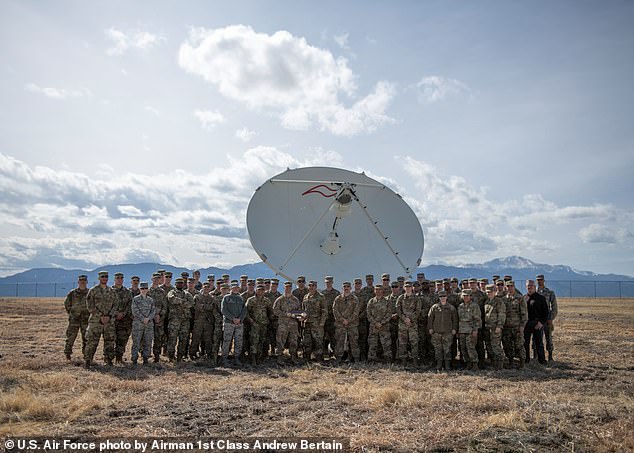
WASHINGTON – Vice President Kamala Harris announced April 18 that the United States will ban direct-ascent anti-satellite (ASAT) missile tests that create orbital debris. “These tests are dangerous and we will not conduct them,” Harris said in a speech at Vandenberg Space Force Base in California.
The self-imposed U.S. ban on destructive anti-satellite weapons tests is an effort to start an international push to develop “new norms for responsible behavior in space,” she said. Harris called on every nation to do the same.
Tests like the one Russia carried out in November 2021 and China conducted in 2007 are “one of the most pressing threats to the security and sustainability of space,” she said. The destruction of space objects through direct-ascent ASAT missile testing is “reckless and irresponsible.” These tests are intended to develop anti-satellite weapons that would be used to “deny the United States our ability to use our space capabilities,” she said.
Comment: This sounds like we are ceding the high ground to our potential enemies, but is it? This ban only applies to direct ascent ASAT weapons. Anybody, including us, who uses these space debris producing weapons run the risk of denying orbital use to all. I think we’re going in a different direction… directed energy weapons. The below is from a C4ISRNET article from last June.
WASHINGTON — The head of the Space Force acknowledged that the U.S. is developing the “appropriate” directed-energy systems to maintain American space superiority, although he declined to provide details in the unclassified setting of a June 16 congressional hearing. Noting that directed-energy systems could be a possible defensive tool for American satellites, Rep. Jim Langevin, D-R.I., asked Chief of Space Operations Gen. Jay Raymond whether the United States was adequately developing a directed energy portfolio “to be an effective capability for space dominance.”
“Yes sir, we are,” Raymond responded, suggesting that they discuss the issue in more detail in a classified setting. “We have to be able to protect these capabilities that we rely so heavily on.” In a statement to C4ISRNET, a Space Force spokesperson said, “General Raymond has stated many times that China and Russia have directed energy capabilities that are designed to damage or destroy our satellites. His response to Congressman James Langevin’s question was confirming that our architecture developments in the face of these threats are appropriate.”
Comment: In my opinion, the announced ban on direct ascent ASAT testing is pure IO. Our approach to ASAT is directed energy and our Space Force is probably far enough along in their development to publicly drop the direct ascent, debris producing approach. Good move, I think.
TTG

TTG
How much energy does a mobile direct energy weapon need to punch through a rainy cloud covered sky ? Targeting alone is significantly more difficult from 500-5000km away. The US didn’t say it was stopping R&D, just testing. Given that the US still hasn’t got a working prototype hypersonic missile, it seems very likely that it hasn’t got a working prototype ASAT missile, so no need to carry out tests in the first place. This is probably PR to distract from the disaster happening at the Azov Steel plant in Mariupol.
joe90,
That Counter Communications System Block 10.2 pictured above is considered an offensive space weapon. although it’s a satellite jammer rather than a satellite killer. Whether we are still working on ground-based mobile DEW is unknown. We also don’t know what orbital weapons are being developed and possibly tested. Just what does the X-37B do on its extended classified space missions? The ground launched satellite kill approach appears to be counter-productive and abandoned for that reason alone. We’re just making a public show of that realization.
https://breakingdefense.com/2021/08/what-satellite-attack-weapon-might-the-us-reveal-soon/
Joe90 –
As I recall the US successfully tested an ASAT 40 years ago. It was launched from an F-15. I don’t know the altitude of the satellite it destroyed. Probably low earth orbit? I suspect it would not have worked on the Russian satellites in the highly elliptical Molniya orbit – too high when at high latitudes and too fast when at lower latitudes.
So it appears to me that we are going with phasers and the Rooskies are going with photon torpedoes.
Hmmmmm.
I hope we don’t see which of these work the best anytime soon. I have a sneaking hunch that our newest branch of service has their job cut out for them. Regardless of methodology, control of the GPS/Network and the ability to cut it off will drastically change how the war is fought. When I read about the Rooskies shit-talking about their targeting of their Kalibre and Kinzhal, you start realizing that they are down the same rabbit hole as we are when depending on satellite and network for targeting and guidance. Also I need to figure out what the difference in “rugged” is between GPS and Glonass.
Gotta think about this for a while. As long as we can keep the war contained and keep out of any kind of direct involvement, I think that we might be able to dodge a bullet here. I think that escalation might not be our best tack.
Don’t know though, I’ll get back to you when I get closer to figuring out just what is going on. It might take a while